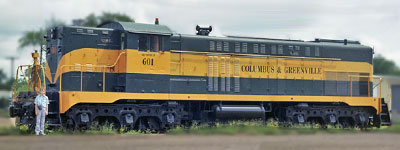


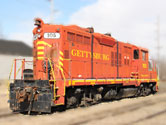




Dardanelle & Russellville Railroad
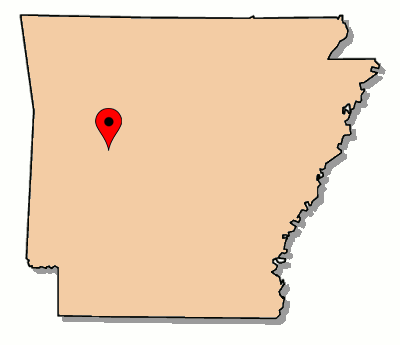 The Dardanelle & Russellville Railroad Company operates 5 miles of shortline trackage in northwest Arkansas, crossing the Arkansas River en route.
The line was initially chartered as the Dardanelle & Russellville Railway, and operations began in August 1883. After reorganization in 1900, operations continued as the Dardanelle & Russellville Railroad. When originally constructed, the railroad carried cotton and other agricultural products. The predominant traffic shifted to coal by 1900, thanks to extensive semi-anthracite coal production along the line. Coal production waned in the mid-1950s when the last underground mines of McAlester Fuel Company were closed. Current traffic includes pulp board, plastics, and forest products. Interchange is with the Union Pacific.
The Dardanelle & Russellville Railroad Company operates 5 miles of shortline trackage in northwest Arkansas, crossing the Arkansas River en route.
The line was initially chartered as the Dardanelle & Russellville Railway, and operations began in August 1883. After reorganization in 1900, operations continued as the Dardanelle & Russellville Railroad. When originally constructed, the railroad carried cotton and other agricultural products. The predominant traffic shifted to coal by 1900, thanks to extensive semi-anthracite coal production along the line. Coal production waned in the mid-1950s when the last underground mines of McAlester Fuel Company were closed. Current traffic includes pulp board, plastics, and forest products. Interchange is with the Union Pacific.

1889 Official Guide ad / collection

1910 Official Guide ad / collection
 Survivors
Survivors
Dardanelle & Russellville #8
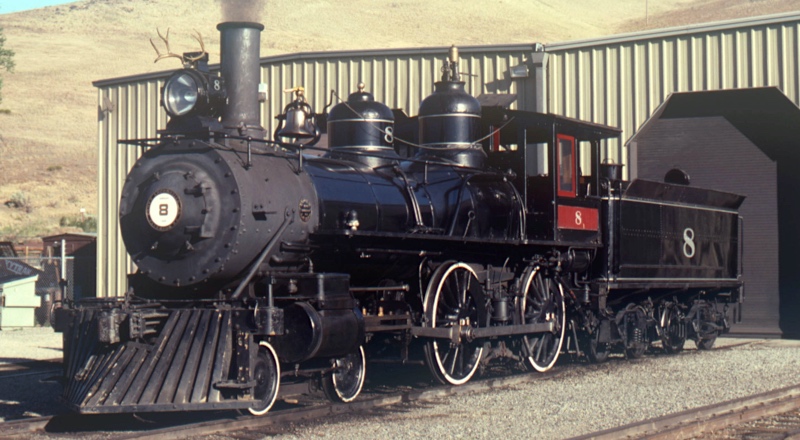
Dardanelle & Russellville #8
Carson City, Nv / Jul 1991 / Ray Leader


Dardanelle & Russellville #8
to St Louis Iron Mountain & Southern
to Dardanelle & Russellville #8
to Twentieth Century Fox Film Corp
to Shortline Enterprises #8
to California State Railroad Museum
to Nevada State Railroad Museum
HawkinsRails thanks the family of the late Ray Leader for use of his Dardanelle & Russellville #8 images

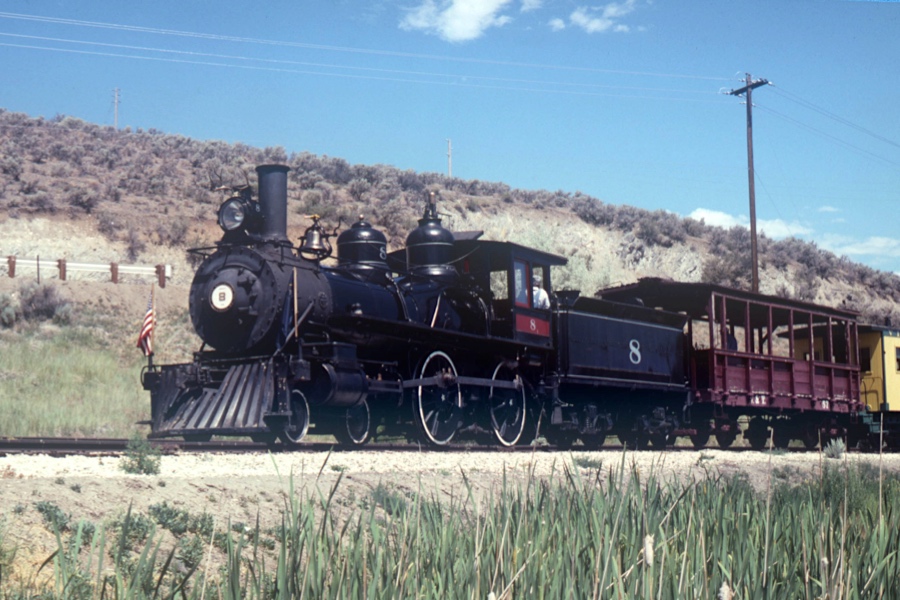
Carson City, Nv / Jul 1991 / Ray Leader
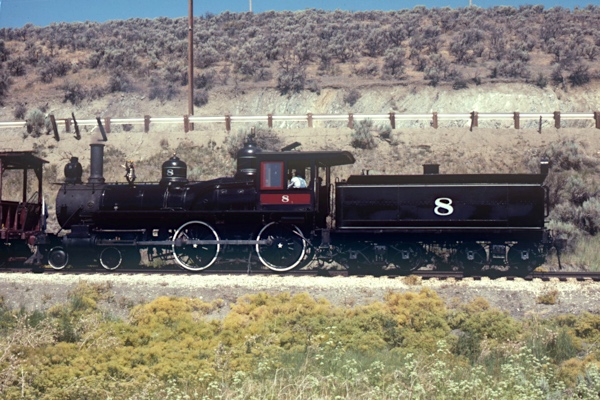
Carson City, Nv / Jul 1991 / Ray Leader

Carson City, Nv / Jul 1991 / Ray Leader
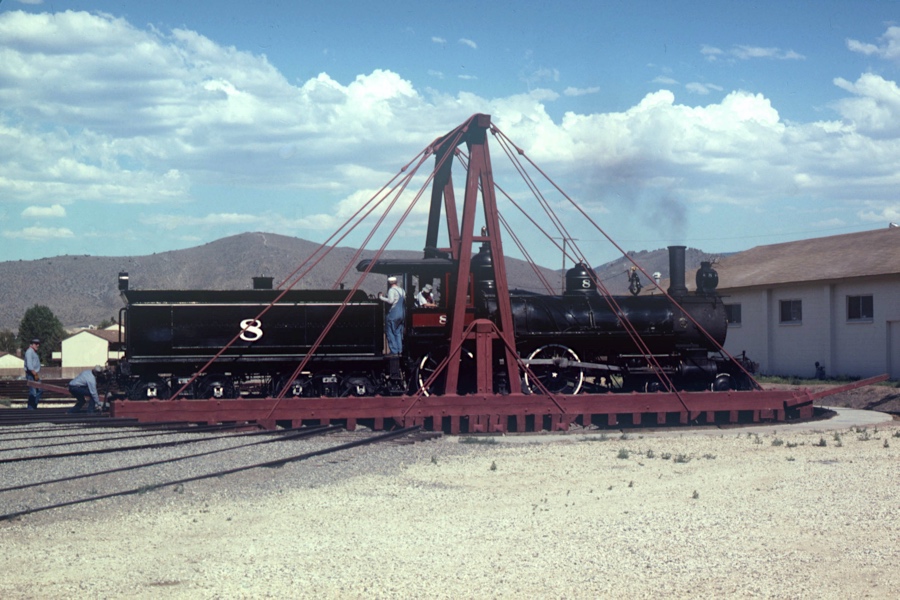
Carson City, Nv / Jul 1991 / Ray Leader
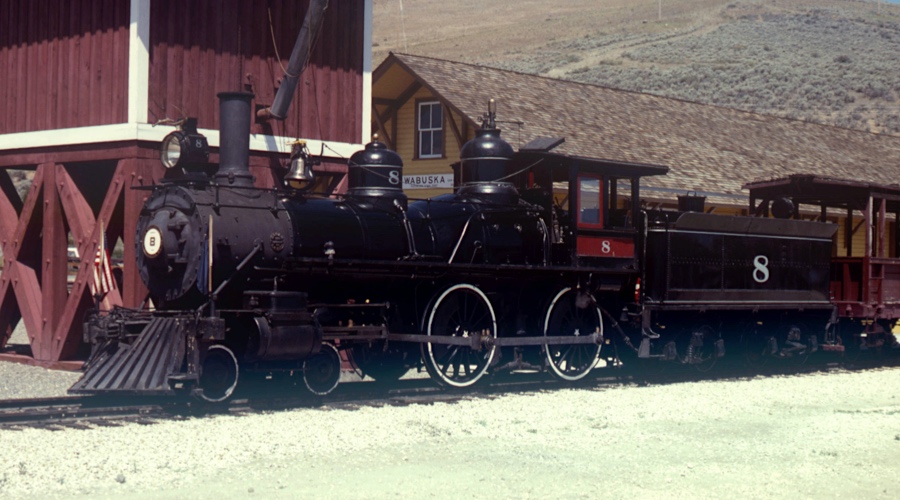
Carson City, Nv / Jul 1991 / Ray Leader

Carson City, Nv / Jul 1991 / Ray Leader
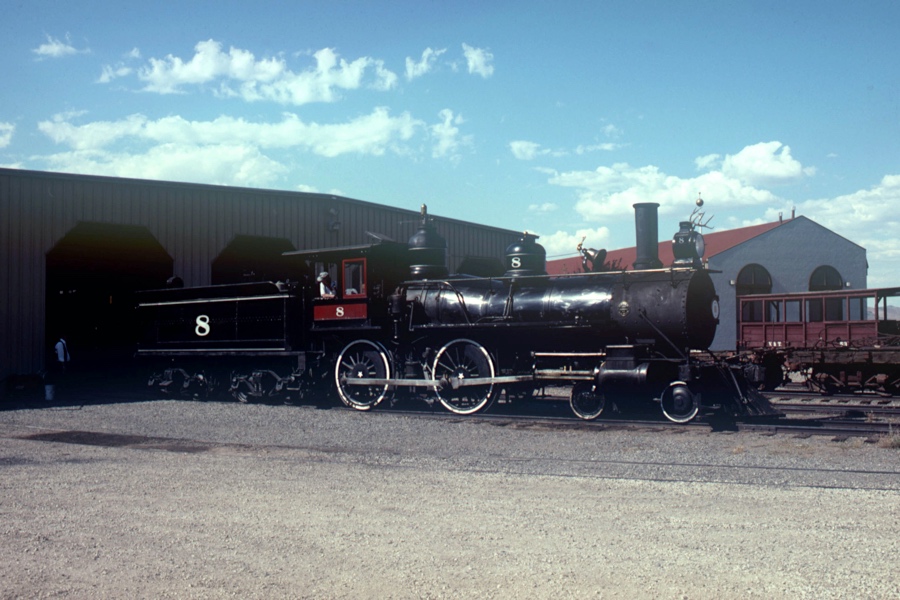
Carson City, Nv / Jul 1991 / Ray Leader
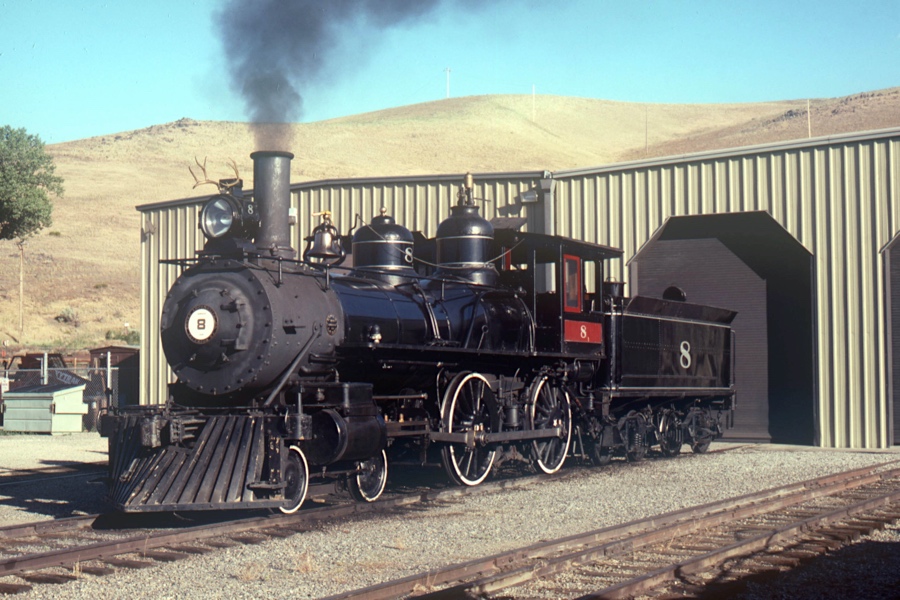
Carson City, Nv / Jul 1991 / Ray Leader
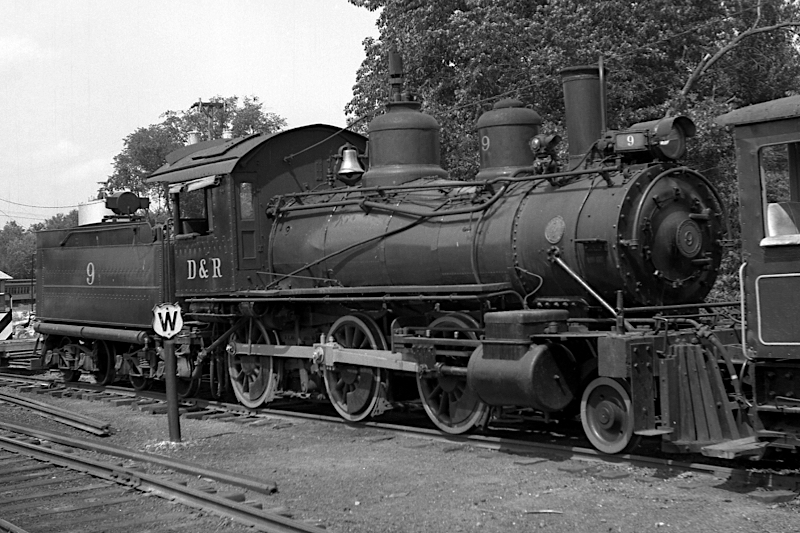
Dardanelle & Russellville #9
North Freedom, Wi / Jun 1970 / JCH


Dardanelle & Russellville #9
to New Orleans & Northeastern #232
to Birmingham rail and Locomotive
to Dardanelle & Russellville #9
to Mid-Continent Rwy Museum, 1963
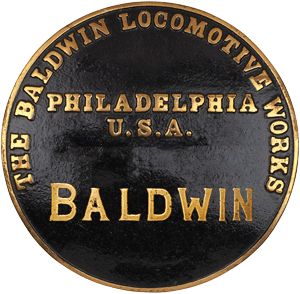
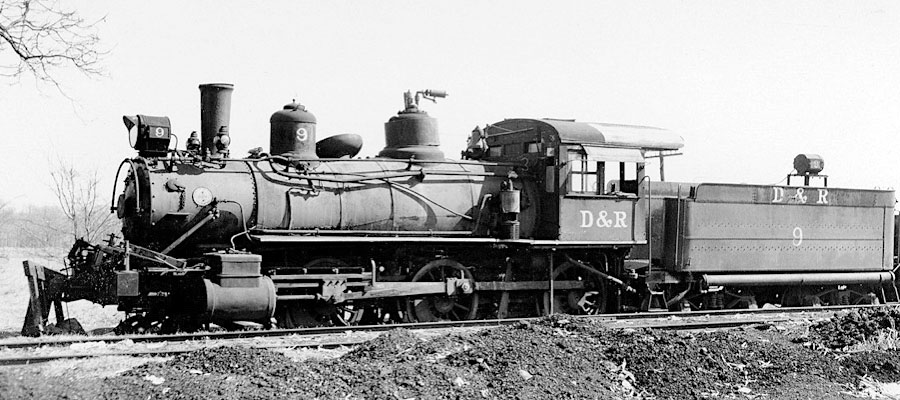
Dardanelle, Ar / Don Ross Collection

South Pekin, Il / Oct 1963 / Don Ross
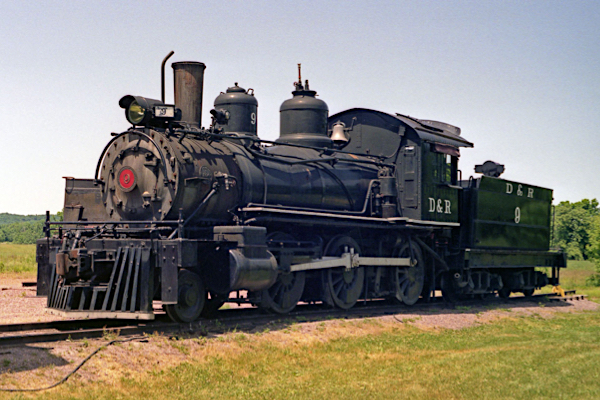
North Freedom, Wi / Jun 1992 / Eddie Gross

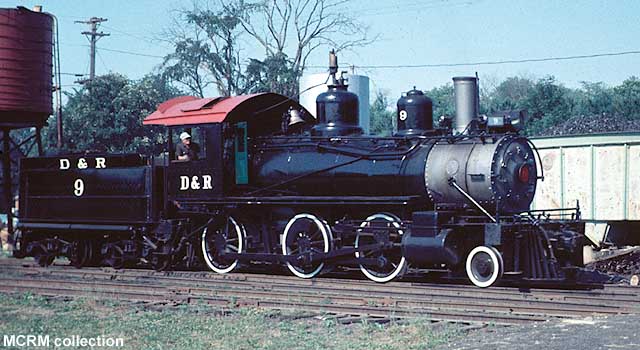 The oldest locomotive at Mid-Continent, #9 came from Burnham, Parry, Williams & Co. (commonly known as Baldwin) at Philadelphia, Pennsylvania in 1884, as New Orleans & North Eastern #232. She received a new wagon-top boiler when rebuilt in 1904. NO&NE sold her in 1917 to a surplus equipment dealer, which in turn resold her to the Dardanelle & Russellville. The locomotive, renumbered #9, served the Arkansas line until 1963, when Mid-Continent bought her with the help of a major donation from Elliot Donelly.
The oldest locomotive at Mid-Continent, #9 came from Burnham, Parry, Williams & Co. (commonly known as Baldwin) at Philadelphia, Pennsylvania in 1884, as New Orleans & North Eastern #232. She received a new wagon-top boiler when rebuilt in 1904. NO&NE sold her in 1917 to a surplus equipment dealer, which in turn resold her to the Dardanelle & Russellville. The locomotive, renumbered #9, served the Arkansas line until 1963, when Mid-Continent bought her with the help of a major donation from Elliot Donelly.
#9 was moved to the museum on her own wheels and quickly put into service. Having suffered damage from an accident in the 1950s, she had been rebuilt by the Missouri Pacific and received a steel pilot at that time. After arrival at North Freedom, museum crews replaced the pilot with an older wooden pilot.
#9 served as the main duty engine in the 1960s and 1970s until she was sidelined with a tired and leaking tender. Crews liked #9 for her smooth ride, easy firing, and fuel efficiency. She was returned briefly to service in 1991 for one summer with a temporary tender, but is again waiting her turn in the shops, this time requiring boiler work and a new tender.

See also our complete Mid-Continent Railway Museum scrapbook in Preservation
Links / Sources
- Wikipedia page for Dardanelle & Russellville Railroad
